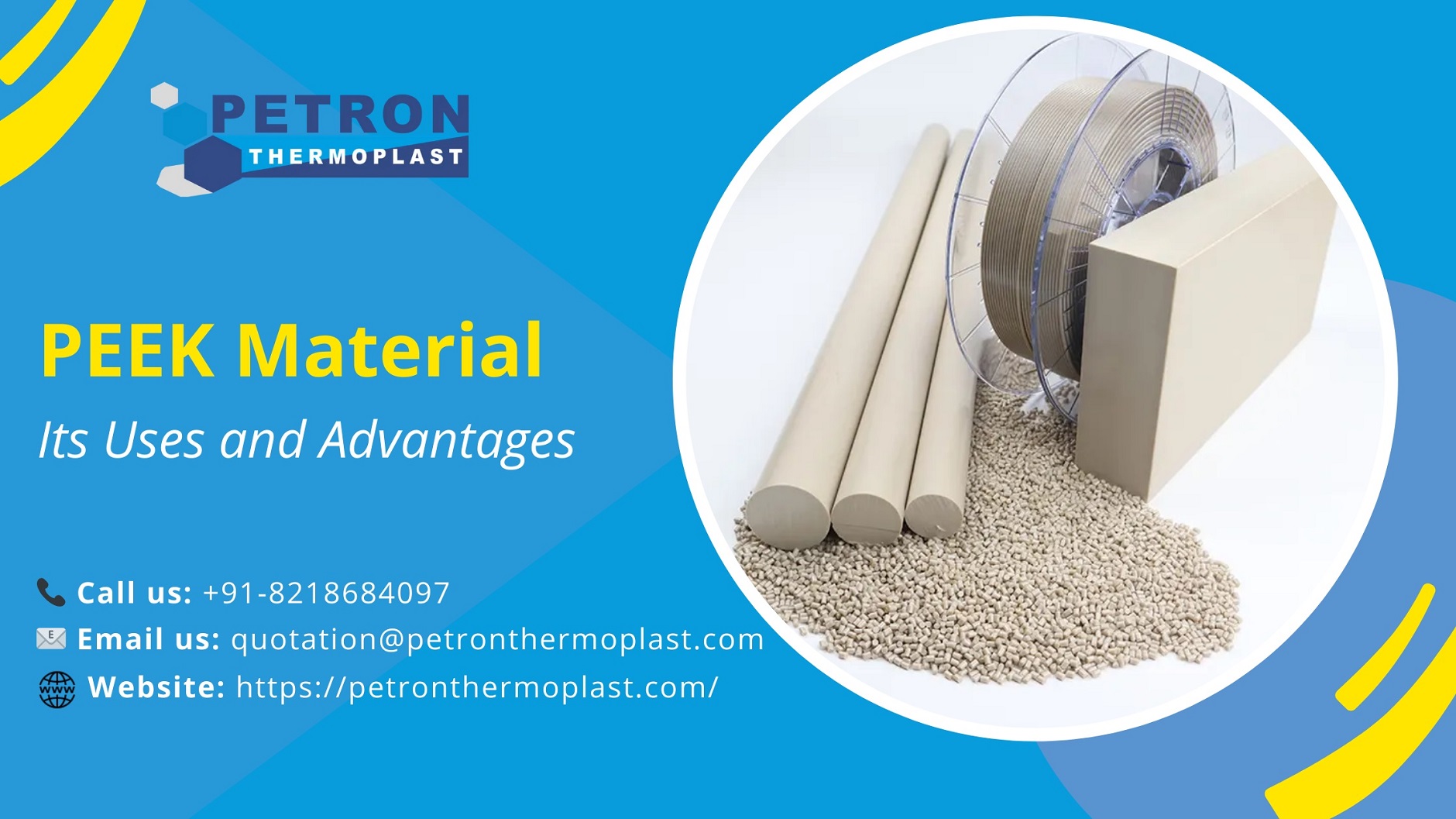In the ever-evolving world of materials science, PEEK (Polyether Ether Ketone) stands out as one of the most versatile and high-performing polymers available today. Known for its exceptional mechanical properties and resistance to extreme conditions, PEEK has become the go-to material in various industries, from aerospace to medical devices. In this article, we will explore the uses and advantages of PEEK material, shedding light on why it has become such a critical component in modern engineering and manufacturing.


What is PEEK?
PEEK is a semi-crystalline thermoplastic known for its unique combination of properties. First developed in the late 1970s, PEEK has since become renowned for its high strength, excellent thermal stability, and resistance to chemicals. These properties make it an ideal choice for demanding applications where other materials may fail.
Advantages of PEEK Material
1. High Temperature Resistance:
One of the standout features of PEEK is its ability to withstand high temperatures. It has a continuous use temperature of around 250°C (482°F) and can maintain its mechanical properties even in extreme heat. This makes PEEK an excellent choice for applications where thermal stability is crucial, such as in automotive and aerospace components.


2. Chemical Resistance:
PEEK is highly resistant to a wide range of chemicals, including acids, bases, and organic solvents. This chemical inertness makes it suitable for use in harsh environments, such as in the oil and gas industry, where materials are frequently exposed to corrosive substances.
3. Mechanical Strength:
PEEK boasts outstanding mechanical properties, including high tensile strength and stiffness. It can endure heavy loads and resist wear and tear, making it ideal for applications that require durability and reliability, such as in gears, bearings, and pumps.
4. Lightweight:
Despite its strength, PEEK is a lightweight material, offering significant weight savings compared to metals. This characteristic is particularly valuable in industries like aerospace, where reducing weight without compromising performance is critical.
5. Excellent Dimensional Stability:
PEEK maintains its shape and dimensions even when subjected to high temperatures and stress. This property ensures that components made from PEEK will continue to perform reliably over time, making it a preferred material in precision engineering applications.
6. Biocompatibility:
PEEK is biocompatible, meaning it can be safely used in medical devices and implants without causing adverse reactions in the body. This has led to its widespread adoption in the medical field, where it is used in spinal implants, dental components, and other surgical devices.
7. Electrical Insulation:
PEEK is an excellent electrical insulator, which makes it valuable in the electronics industry. It is used in applications requiring high-performance insulation materials that can withstand harsh environments, such as connectors and cable insulation.


Common Uses of PEEK Material
PEEK’s unique properties have made it indispensable across a variety of industries. Here are some of the most common applications of PEEK material:
1. Aerospace:
In the aerospace industry, PEEK is used for manufacturing components that must withstand extreme conditions, such as high temperatures, pressure, and exposure to chemicals. It is often found in aircraft interiors, engine components, and cable insulation.
2. Medical Devices:
PEEK’s biocompatibility and ability to be sterilized make it ideal for medical applications. It is used in the production of surgical instruments, orthopedic implants, and dental devices. PEEK’s strength and flexibility allow for the design of durable and comfortable medical implants.
3. Automotive:
In the automotive sector, PEEK is employed in the manufacturing of components that require high thermal resistance and mechanical strength, such as engine parts, seals, and bearings. Its lightweight nature also contributes to the overall fuel efficiency of vehicles.
4. Oil and Gas:
PEEK is widely used in the oil and gas industry due to its resistance to harsh chemicals and high temperatures. It is utilized in downhole components, seals, and other parts exposed to extreme conditions.
5. Electronics:
The electronics industry uses PEEK in the production of connectors, cable insulation, and other components that require excellent electrical insulation properties. Its resistance to heat and chemicals ensures long-term reliability in demanding environments.
6. Industrial Machinery:
PEEK’s durability and resistance to wear make it a popular choice for industrial machinery components such as gears, bearings, and bushings. Its ability to perform under continuous stress and harsh conditions enhances the longevity and efficiency of machinery.
Petron Thermoplast: Your Trusted Source for PEEK Material
At Petron Thermoplast, we understand the critical role that high-performance materials play in modern engineering and manufacturing. That’s why we offer top-quality PEEK material that meets the demanding standards of various industries. Whether you’re in aerospace, medical devices, automotive, or any other sector, our PEEK material provides the reliability and performance you need to excel.
Conclusion
PEEK material is a true powerhouse in the world of advanced polymers. Its combination of high-temperature resistance, mechanical strength, chemical inertness, and biocompatibility has made it an essential material in numerous industries. Whether it’s in aerospace, medical devices, automotive, or industrial applications, PEEK’s unique properties continue to drive innovation and enhance performance. As technology advances and the demand for high-performance materials grows, PEEK is likely to play an even more significant role in the future of engineering and manufacturing.







